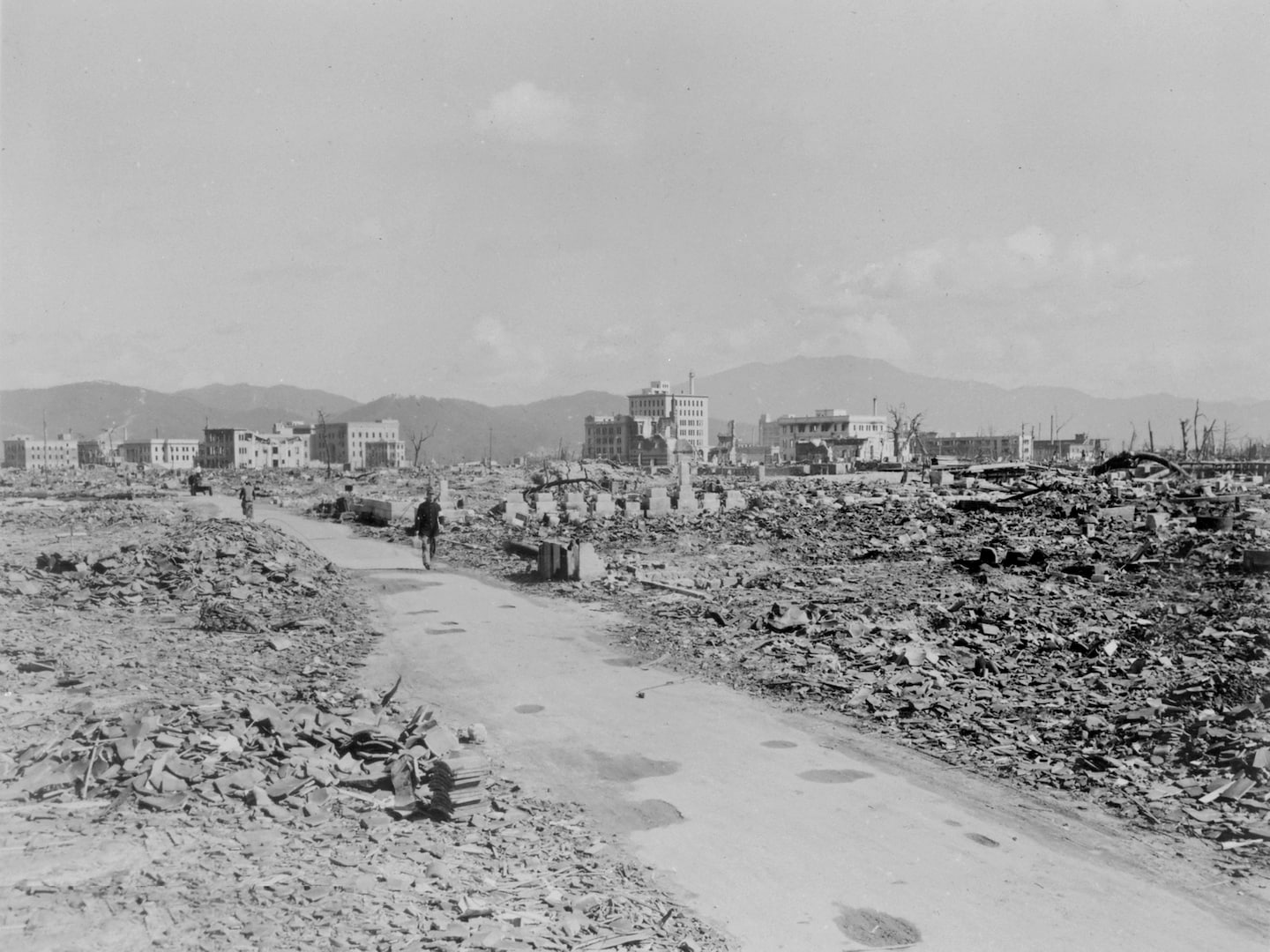One of humanity’s remarkable achievements is the absence of the use of a third nuclear weapon

In the decision’s immediate aftermath, however, little was known of the scale and nature of the violence, and for a while the U.S. government wanted to prevent knowledge. When reports said the Hiroshima bomb was equivalent to more than 20,000 tons of TNT, a young reporter stationed in Europe, named Walter Cronkite, assumed this was a typo, which he changed to 20 tons. “It was just the same as getting a bigger gun than the other fellow had to win a war,” said Truman, adding, “Nothing else but an artillery weapon.”
Except this one melted eyes in their sockets. Radiation sickness — the bomb’s lethality long after detonation: uncontrollable vomiting, diarrhea, bleeding gums, wounds that would not heal, disappearing white blood cells, fevers reaching 106 degrees — had been denied, then minimized. Army Lt. Gen. Leslie Groves, head of the Manhattan Project, first dismissed Japanese reports of lethal radioactive effects as “pure propaganda,” then told a Senate committee that radiation poisoning “is a very pleasant way to die.” In May 1946, however, John Hersey arrived in Hiroshima.
One of his earlier New Yorker stories had concerned the sinking of a PT boat commanded by a young sailor named John F. Kennedy. Two years later, another story began:
“At exactly fifteen minutes past eight in the morning, on August 6, 1945, Japanese time, at the moment when the atomic bomb flashed above Hiroshima, Miss Toshiko Sasaki, a clerk in the personnel department of the East Asia Tin Works, had just sat down at her place in the plant office and was turning her head to speak to the girl at the next desk.”
What followed was, Lesley M.M. Blume says, “one of the most important works of journalism ever created,” 30,000 words that filled the entire August 31 issue of the New Yorker and became the book “Hiroshima,” which has not since been out of print. Blume’s new book about the making of Hersey’s essay, “Fallout: The Hiroshima Cover-up and the Reporter Who Revealed It to the World,” argues that by defeating Gen. Douglas MacArthur’s censorship regime in Japan, Hersey compelled Washington to surmount its reticence, born of queasiness, about the bombings. Even Groves registered few, if any, objections to the essay.
After the war had killed perhaps 60 million combatants and civilians, and after the Holocaust’s industrialized murder, people experienced what Blume calls “atrocity exhaustion.” Nevertheless, Hersey’s unsparing journalism, Blume argues, made impossible any further discussion of the bomb as a conventional weapon, and his understated, matter-of-fact presentation of horrific facts facilitated the implementation of deterrence, which has been successful. So far.
Hersey could not, however, immunize his nation from some subsequent follies when nuclear weapons became entangled in interservice parochialism and rivalries. Fred Kaplan’s jaw-dropping 2020 book “The Bomb: Presidents, Generals, and the Secret History of Nuclear War” reports that a Navy commander once minimized the military effectiveness of nuclear weapons — the Air Force had custody of them — by testifying “that you could stand at one end of Washington National Airport, set off an atom bomb on the other end, and walk away ‘without serious injury.’ ” The Air Force, exuberantly multiplying potential Soviet targets to match the expanding U.S. nuclear arsenal, assigned 17 nuclear weapons to a Soviet base inside the Arctic Circle, where Soviet planes would land after bombing U.S. sites. U.S. nuclear weapons were allocated not just to Soviet tanks but also to the factory that produced them, the steel mill that supplied the factory, the ore-processing facility that supplied the mill, and the ore mine.
The human capacity for such lunacy suggests that people are too optimistic when they say that the vast majority of human beings who will ever live have not yet lived. If true, this will require an endless supply of the skill, leavened by luck, that has gotten humanity through its most recent 27,394 days.
Read more:






